Cupra is now bigger by the numbers than rivals like Alfa Romeo and Polestar, and is closing on one-half a million sales since its creation in 2018.
The sporty division of Seat has become so successful that it has eclipsed its parent company which is moving into the e-mobility arena.
Thank Formentor for Cupra’s success, its dynamic styling helping to make it a best seller here and overseas.
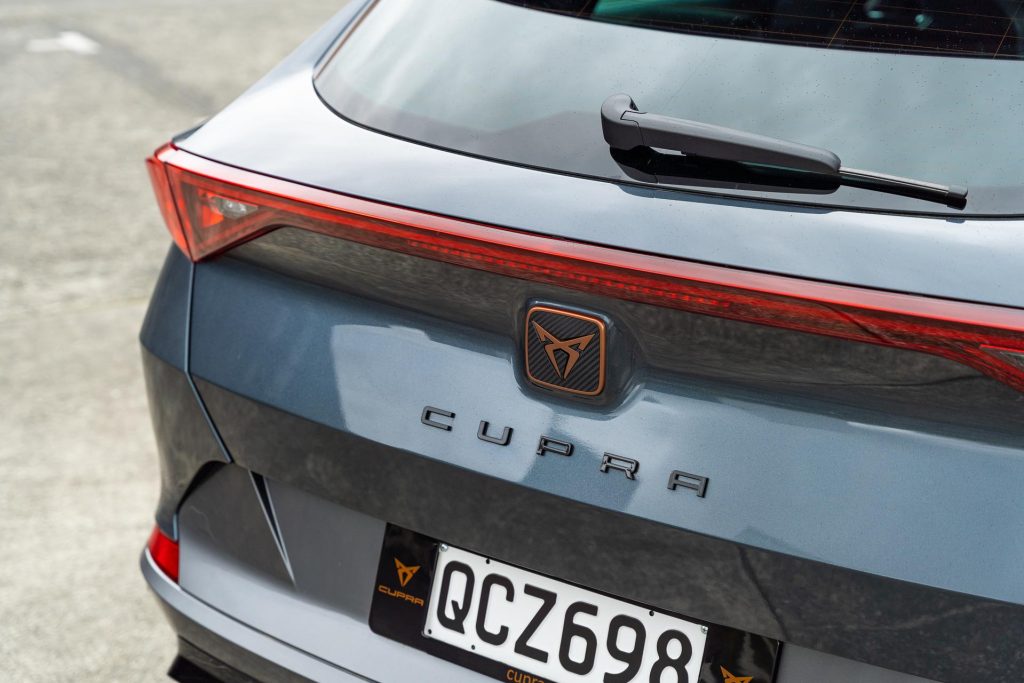
The model you see before you, the V e-Hybrid, is the fifth example in the Formentor line-up, a front driver. It is also the company’s first plug-in hybrid electric vehicle (PHEV).
With drive-away pricing of $78,500, it is eligible for a clean car rebate of $4025. But likely not for long following the change of government.
Currently then it is roughly the same price as the 228kW Formentor VZ AWD variant. It’s not nearly as quick, with a 110kW/250Nm 1.4L turbopetrol under the hood and an 85kW/330Nm motor along for the ride, powered by a 12.8kWh/125kg battery pack sited under the rear seat.
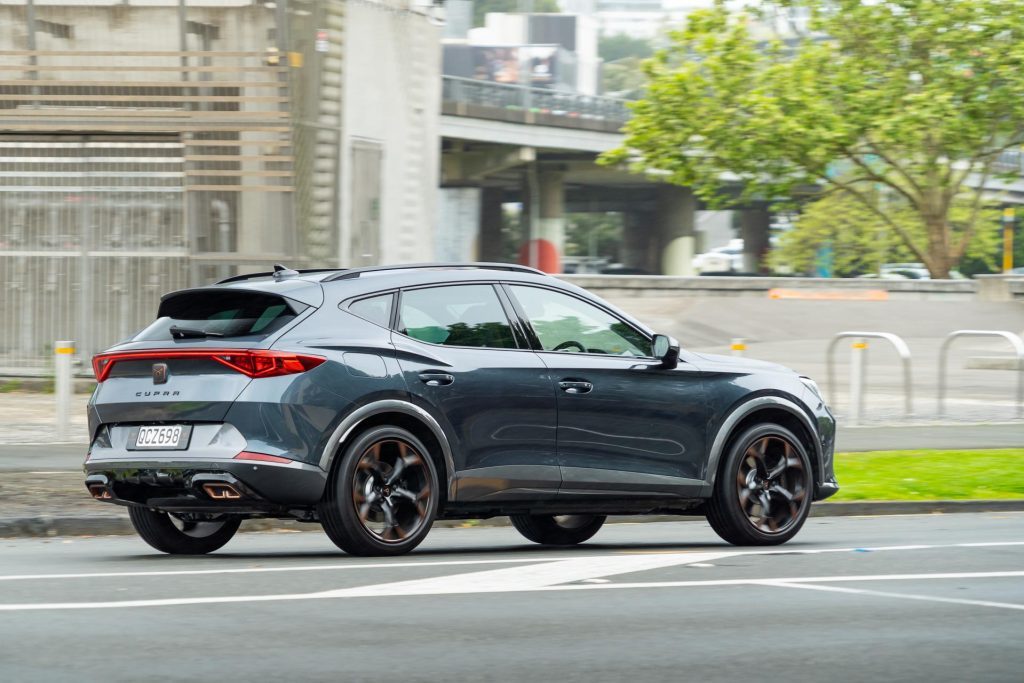
Total system power is 180kW and 400Nm, the latter the same as the VZ AWD variant.
There’s 50-odd km of emissions-free motoring possible and it is way more abstemious than VZ with a claimed overall fuel use figure of 1.3L/100km (33g/km; vs 8.6L/100km for the VZ). That’s providing you remember to plug in regularly.
The output is directed via a six-speed twin-clutch transmission, and it’s about as quick as the $56k V 4Drive AWD variant for acceleration.
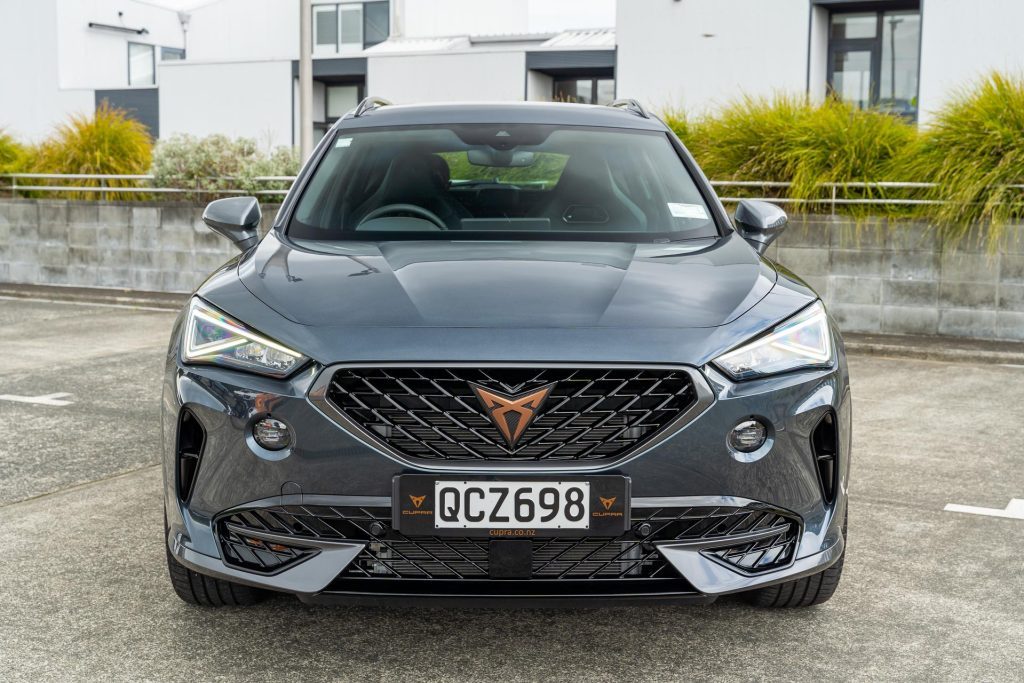
We managed a couple of 6.87sec runs, just under its 7.0sec claim, and matched that with a 3.77sec 80-120 overtake.
At least, that’s what we got initially. We’d noticed a launch control message illuminate about the same time a cop showed up so thought we’d give it another lash at a different location on a better weather day.
Sure enough, in Cupra mode and stopped up on the brake, the LC message reappeared and the electronics (XDS electronic diff lock) ensured a perfect take off. The result was a best 0-100 of 6.15sec. The 80-120 time was unchanged.
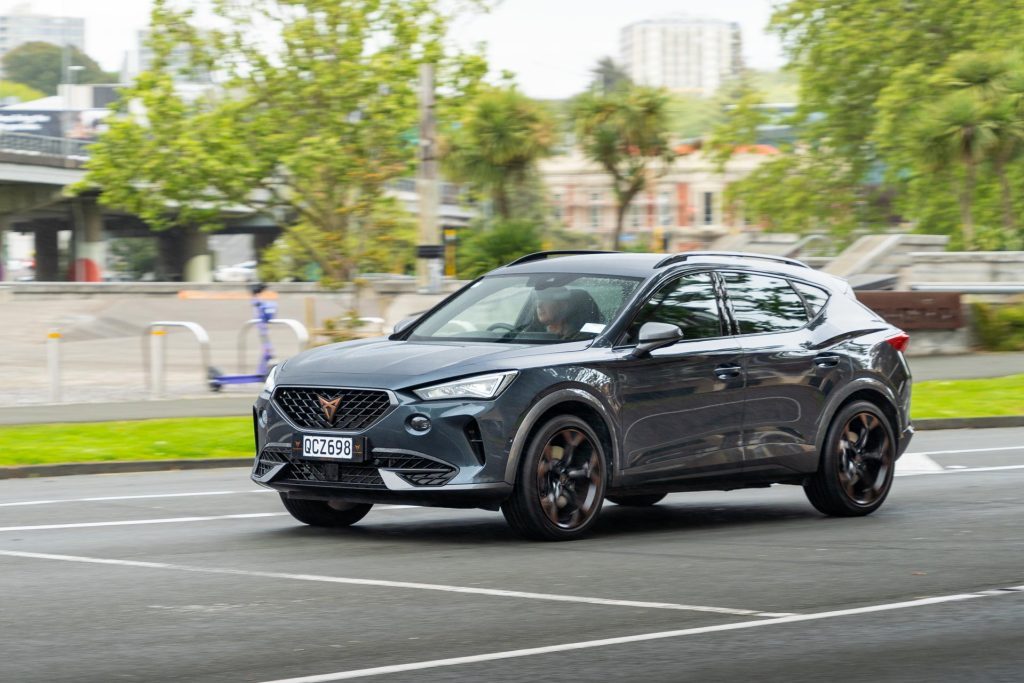
So this is as quick as it looks, and with both power units acting together it feels fast when overtaking.
To put it into perspective, the base Formentor with the same 1.4L turbopetrol but no electrification managed 8.9sec (and 6.6L/100km) while the 2.0L with AWD took 7.1sec.
The VZ is a rocket, at 4.7sec, but it is around 100kg lighter and AWD makes for a quick getaway.
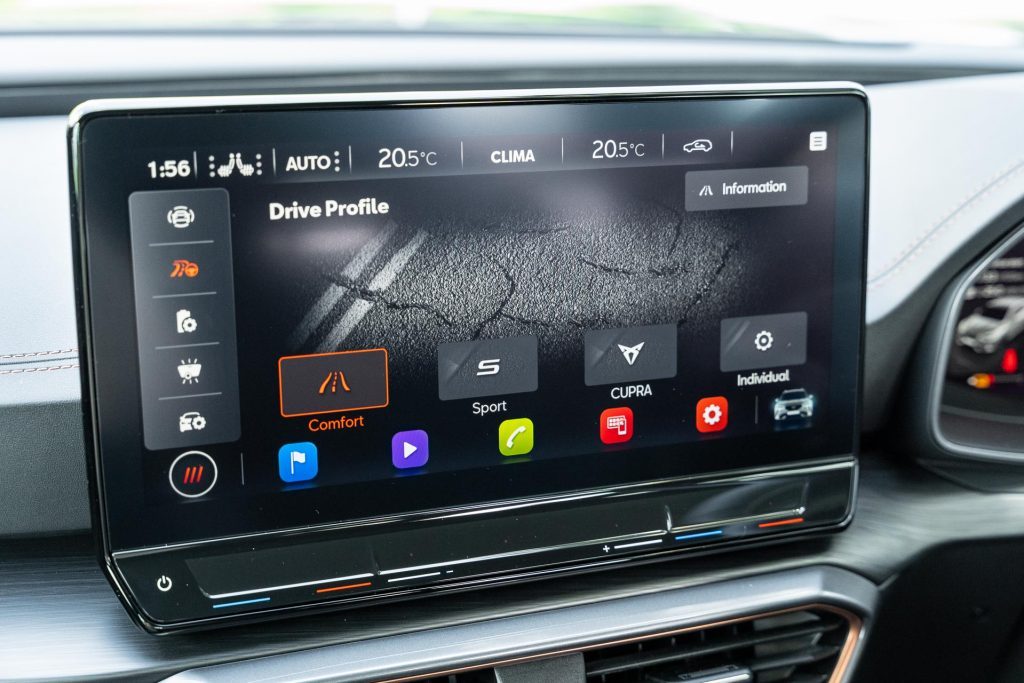
Once we’d run the battery down the engine consumed fuel at a rate of around 6.5L/100km when cruising at highway speeds.
An overnight trickle charge easily reset the EV range to its 50km daily allocation. Only five hours is needed. There’s a battery hold facility, where charge can be reserved for later use. The battery has an eight-year/160,000km warranty.
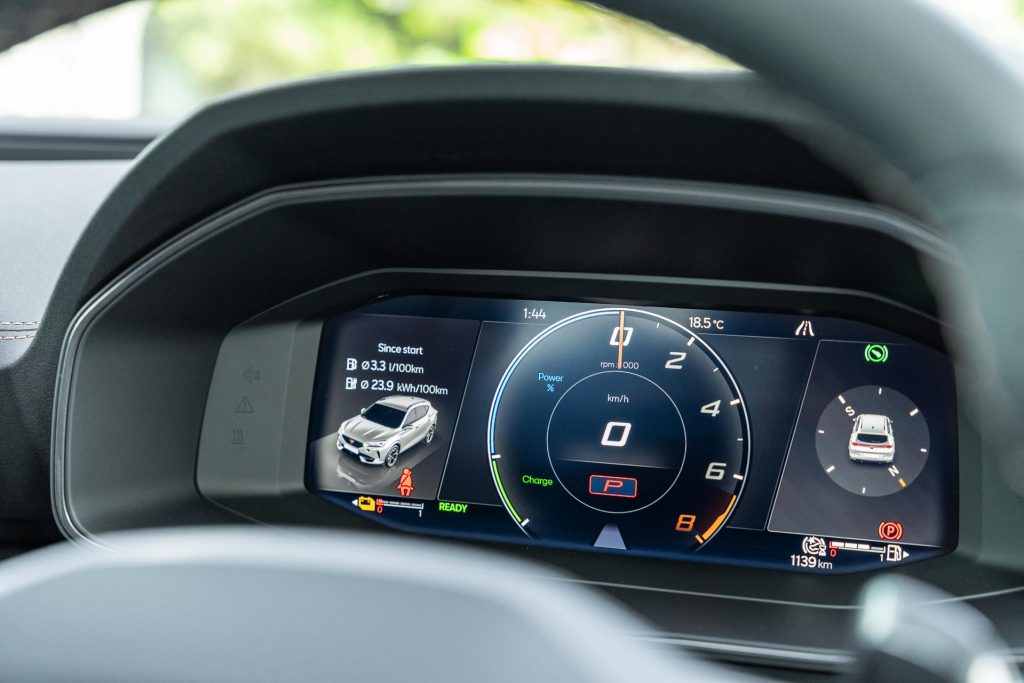
Regen is interesting in this; we left it in the Auto setting and it registers cars in front and slows for these, regenerating the battery. It does more coasting in Comfort mode, more regen in the Sports modes.
Most of the time we drove the PHEV in the Comfort mode because that’s where you get the best mix of ride, handling and engine perkiness.
There’s more in Cupra, along with an unexpectedly sporty engine growl, but there’s also plenty enough power in town and general use in the Comfort setting.
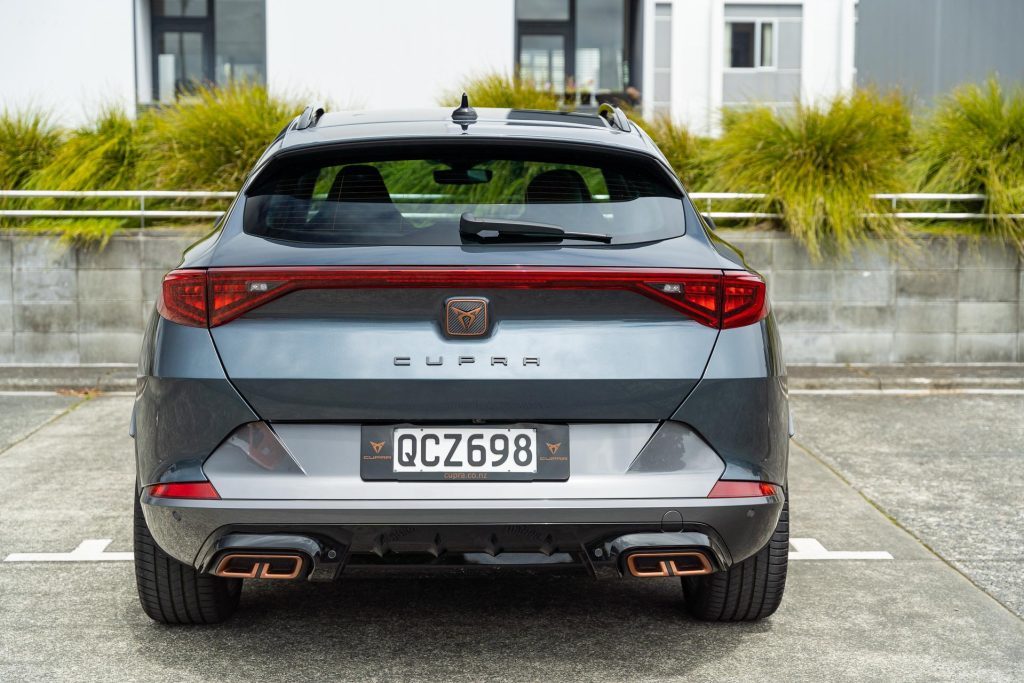
There’s no Eco mode per se, but if you go into the Individual area, which you should for other reasons, an Eco engine drive mode can be selected if you so desire. Even then it doesn’t feel nobbled, especially using electric power alone.
There’s oodles of grunt for easing about town in hybrid mode (should the battery be exhausted) and stop/start is seamless.
In electric mode the 330Nm of power from stopped means it is just as hasty as when the 1.4T engine is in charge.
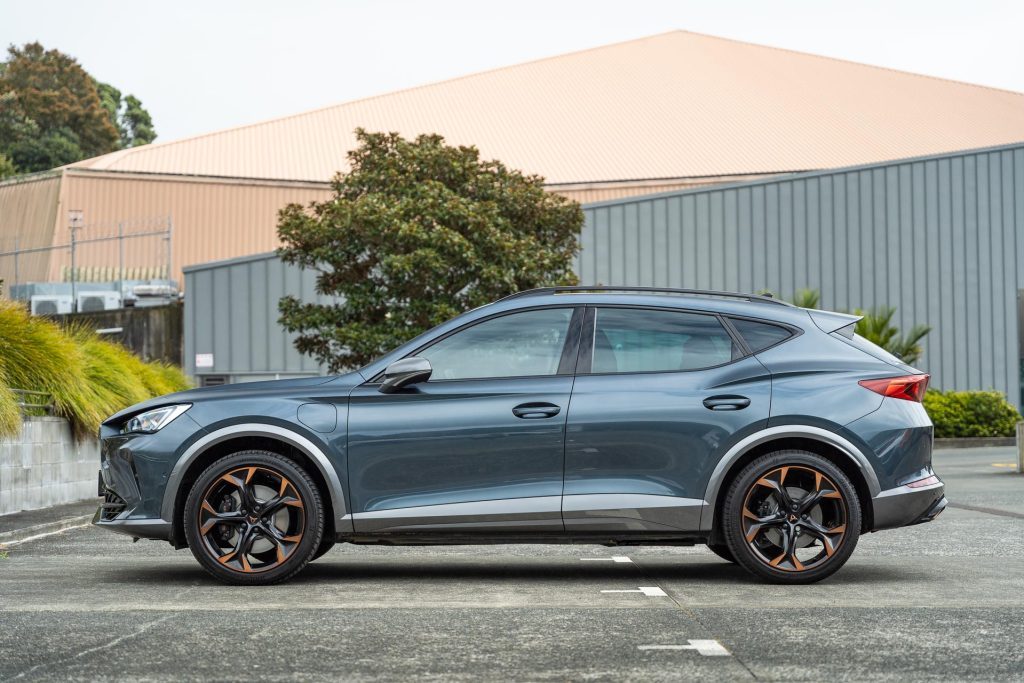
The other reason you might want to select Individual configuration is to mess with the dynamic chassis control (DCC) set-up where there’s a sliding scale for the adaptive damping.
In the Comfort mode, it is set about one-quarter of the way up and even then on some of our cyclone-damaged roads the ride can be a little abrupt on occasion. Setting it to the bare minimum (or Comfort plus) gets things right though.
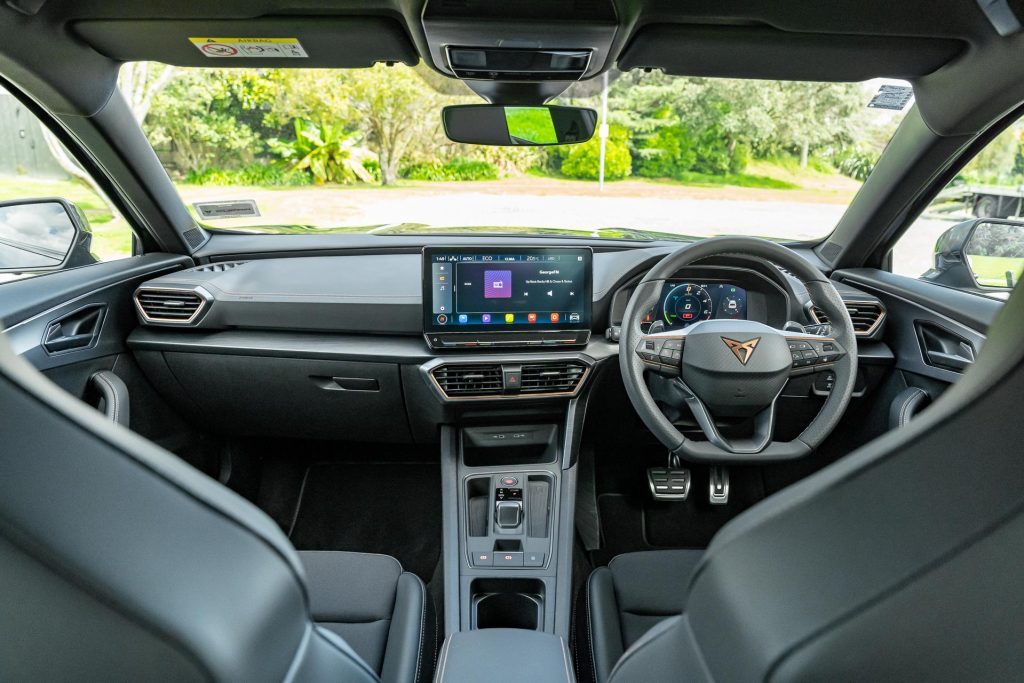
Anyhow, the overall suspension set-up of this Formentor tends firm and sporty, and with a look like this (and the firm’s youthful fun dynamic) you’d expect as much.
This may seem like a crossover aesthetically but it drives more like a sporty estate. Don’t press too hard in the wet though because the 400 Newts can overwhelm the grip up front.
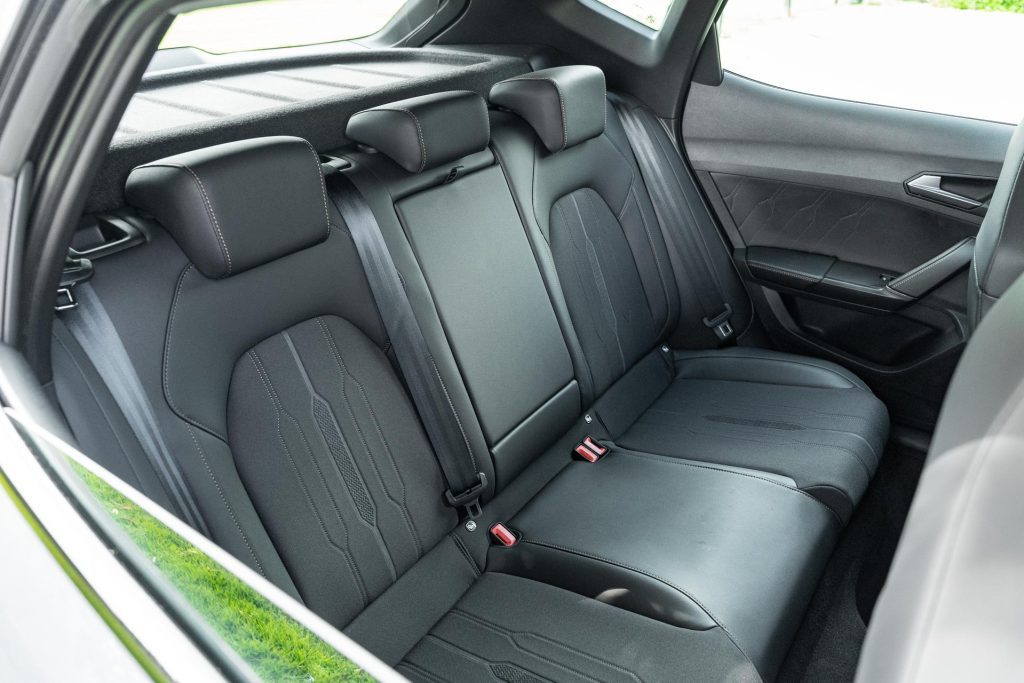
On dry roads, however, this is a zesty wee demon, turning in blazing fashion (2.1 turns lock to lock) and holding a line well, the fronts end securely tied down, the steering playful after turning off steering assist (each time, unfortunately).
It looks and is fast but the brakes are up for that, helped to a best 32m emergency stop by the Turanza rubber that also keeps road rumble to moderate levels.
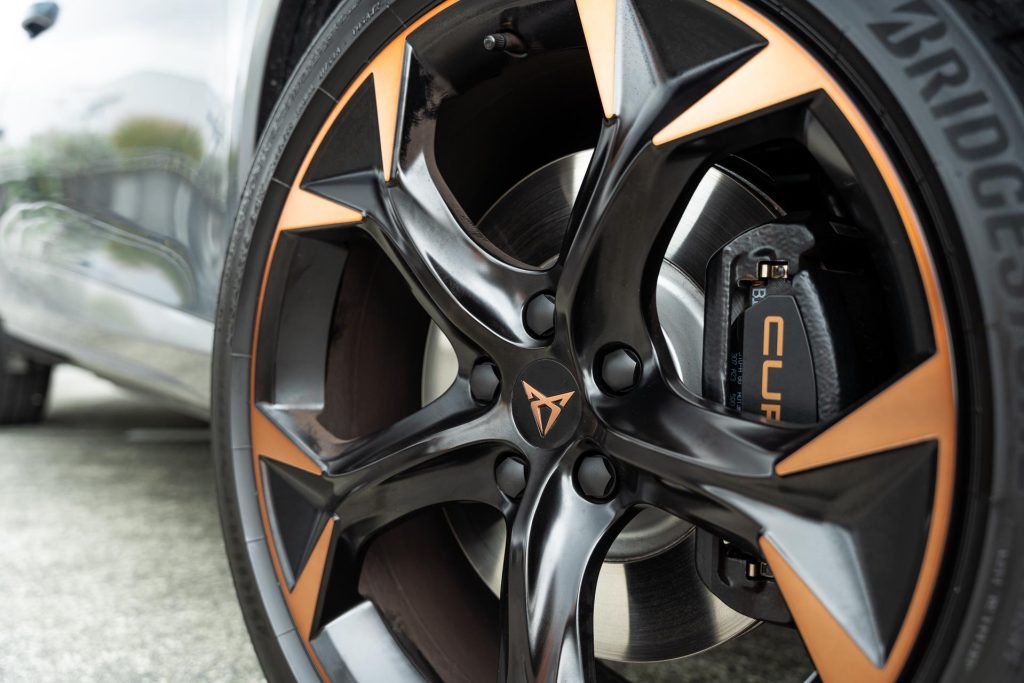
On our reference coarse chip seal surface this registered a worst of 72dB at 100m/h.
The Formentor e-Hybrid is well specified, although head-up display and traffic sign recognition aren’t on the list.
It does however get adaptive cruise with lane keeping, and all the other safety goodies that ensure a five-star ANCAP result, along with heated seats partly finished in leather (full leather an $1850 option), a reasonably straightforward touchscreen operation, and a powered fifth door with almost flat split folding (1415L, up from 345 with all seats in use).
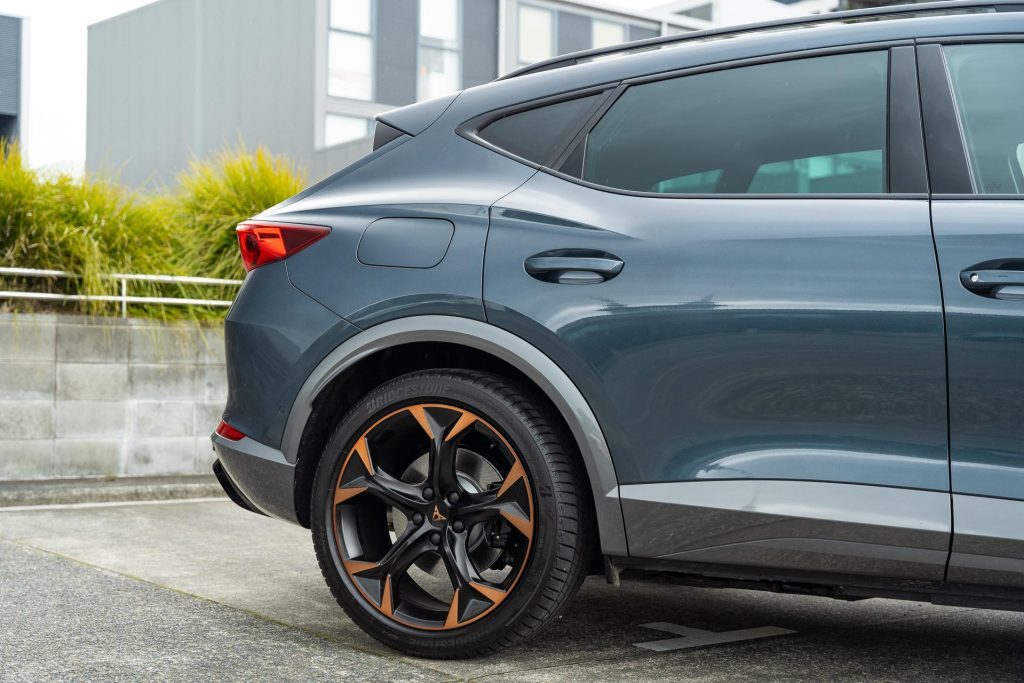
Haptics are limited to volume slider – there’s one on the wheel so use that – and temperature control which can be done by touchscreen.
Other items include a heated wheel, park assist, powered sports seats, wireless phone charging and hook-up, three-zone AC, sat nav, and a mode 2 charging cable with three-pin plug.
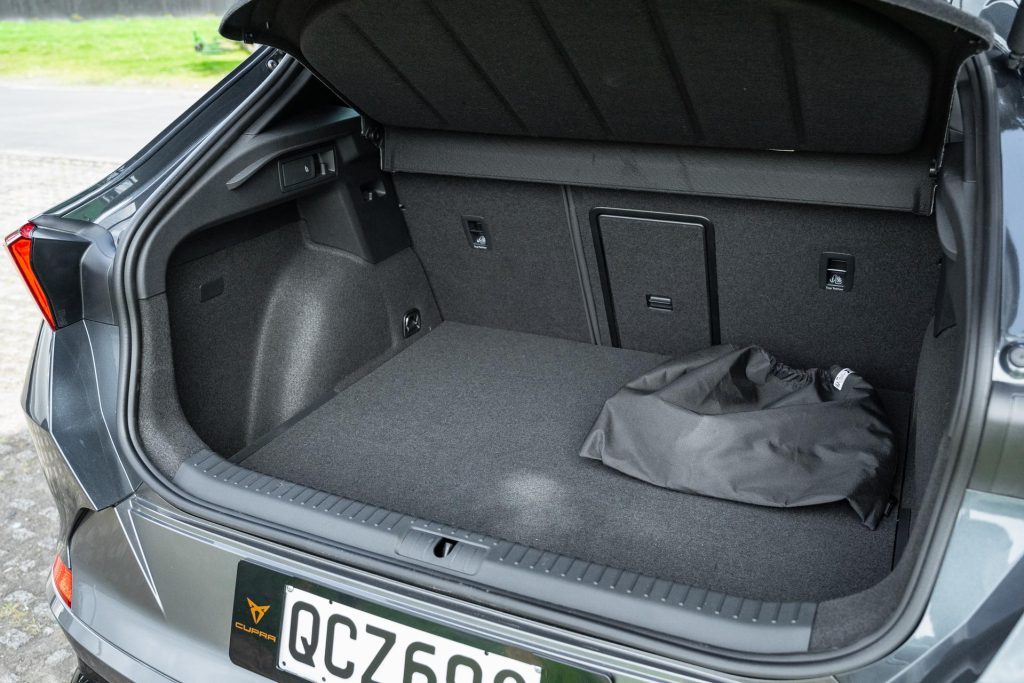
A drive mode selector and stop/start button on the wheel cost $1300 extra but we wouldn’t bother as the latter is well sited, the former easy enough in touchscreen use.
Spend the money instead on matrix LED headlamps or an electrically operated towbar (both $1500, braked towing capacity 1500kg) or maybe special paints from $850-$3500, the latter for matte finishes.
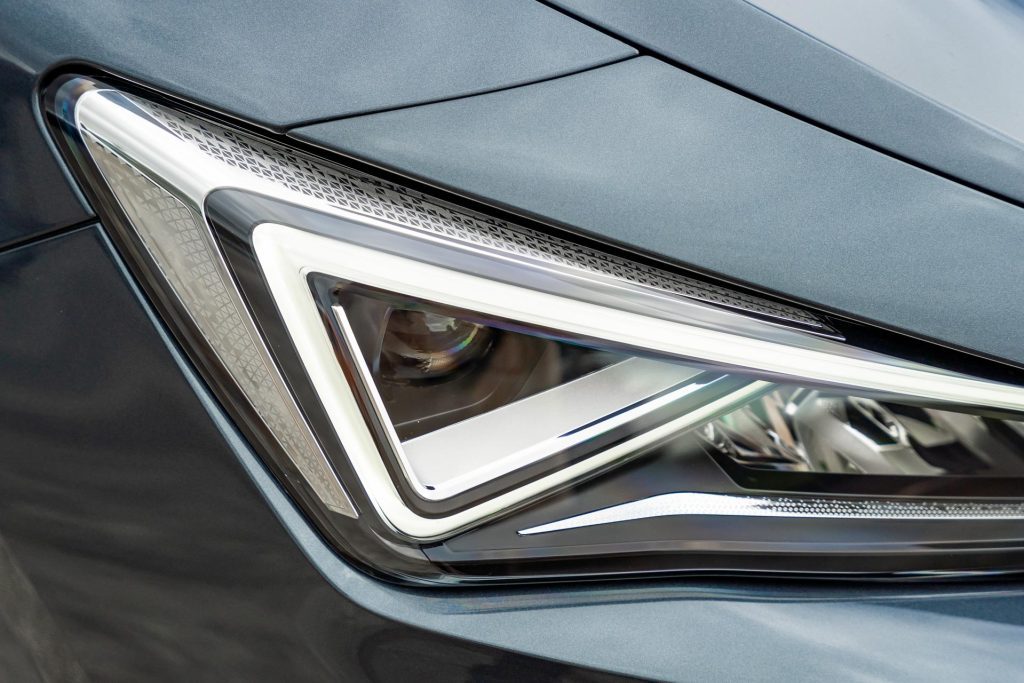
So another fab Formentor. This is for those who might want the best of both petrol and electric worlds but can’t be bothered with charging on the go or long periods hooked up to a charger.
If you need more space and practicality, consider also the Leon Sportstourer with the same powertrain.
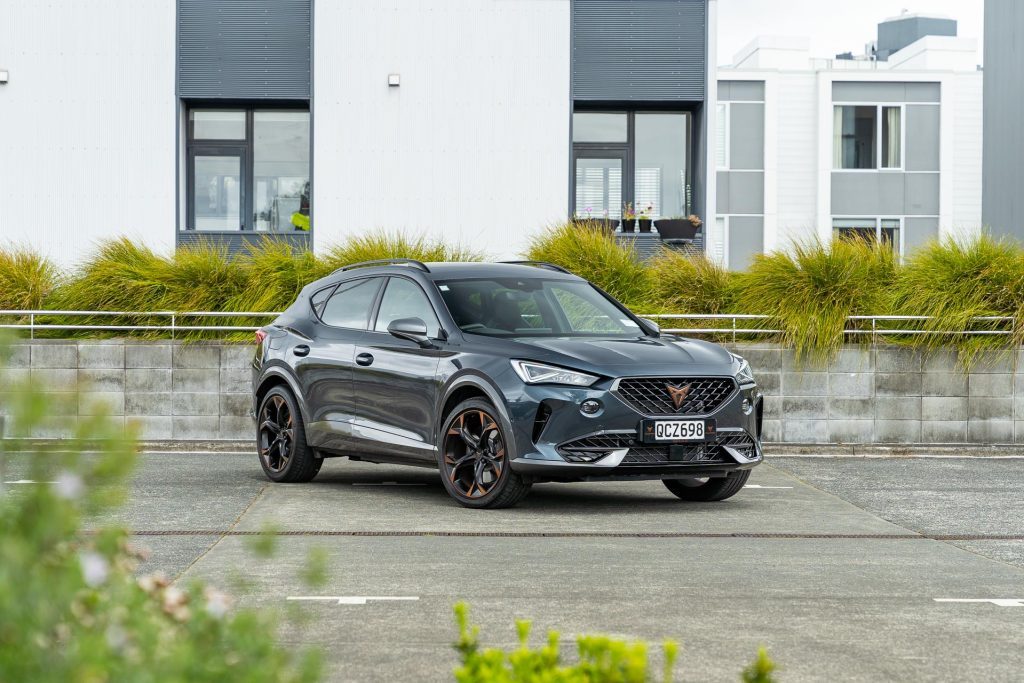
It arrives early in 2024, with a sticker price of $77,900.
| Model | Cupra Formentor V e-Hybrid |
| Price | $78,500 |
| Clean Car Discount | Rebate – $4,025 |
| Engine | 1395cc, IL4, T, DI |
| Power | 110kW @ 5000-6000rpm |
| Torque | 250Nm @ 1500-3500rpm |
| Total Hybrid Output | 180kW/400Nm |
| Battery | 12.8kWh |
| Drivetrain | 6-speed twin-clutch, FWD |
| Fuel Use | 1.3L/100km |
| C02 Output | 33g/km |
| 0-100km/h | 6.15 sec |
| Tyre Size | f/r – 245/40/R19 |
| Fuel Capacity | 40L |
| Stability systems | ABS, ESP, TV |
| Safety | AEB, ACC, BSM, LDW. RCTA, ALK, AHB |
| Luggage Capacity | 345-1415L |
| Tow rating | 750kg (1500kg braked) |
| Service intervals | 12 months/15,000km |
| Warranty | 5 years/100,000km |
| ANCAP rating | 5 Stars (2021) |
| Weight | 1735g (claimed) |
This story first appeared in the November 2023 issue of NZ Autocar magazine.


